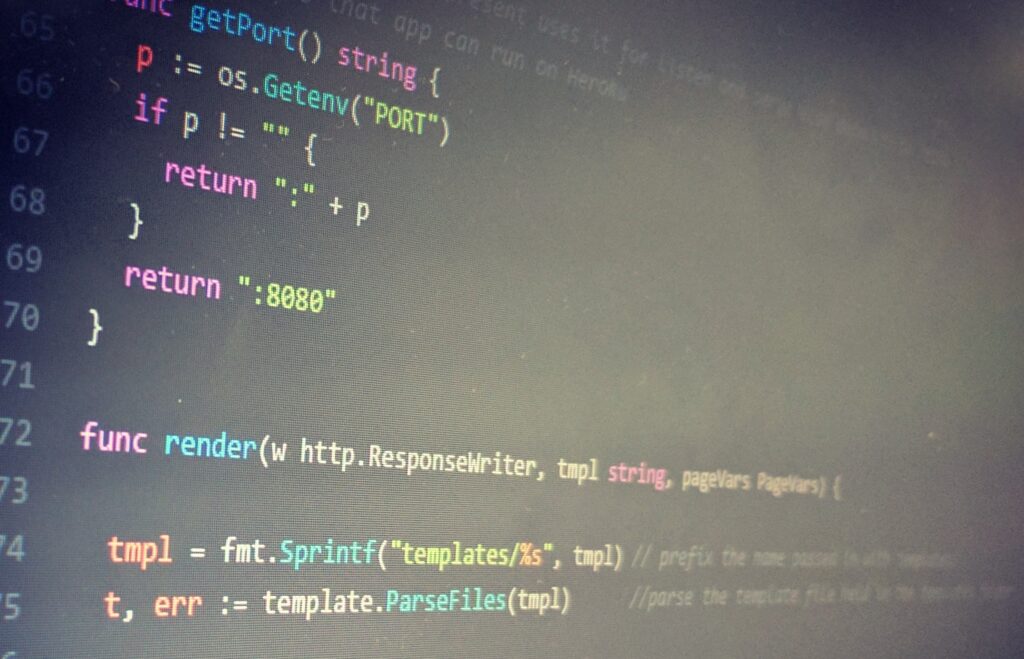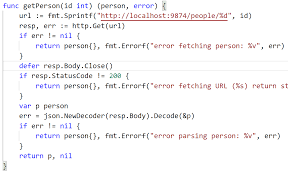GoLang
WHAT IS GO?
- Go, also known as Golang, is an open-source programming language developed by Google.
- It is designed to be efficient, simple, and reliable, providing a straightforward and readable syntax.
- Go has built-in support for concurrency, allowing for efficient execution of concurrent tasks through goroutines and channels.
- It emphasizes scalability and is well-suited for building large-scale applications, with a focus on performance and resource efficiency.

USE OF GO
- Go is widely used for web development, offering fast execution speed and efficient memory management for building high-performance web applications and APIs.
- Its built-in support for concurrency through goroutines and channels enables efficient handling of concurrent tasks, making it suitable for networking, distributed systems, and parallel processing.
- Go’s simplicity and readability make it an excellent choice for building command-line tools and utilities, thanks to its straightforward syntax and the ability to produce standalone executable binaries.
- It is commonly employed in cloud computing, as Go’s concurrency features and efficient resource utilization make it well-suited for developing cloud-based services, microservices, and containerized applications.
- Go’s low-level capabilities make it useful for system programming, enabling developers to interact with hardware and operating systems, making it suitable for building operating systems, device drivers, and other system-level software.
WHAT ARE THE FEATURES OF GO?
- Simplicity – Go has a simple and minimalist syntax, making it easy to learn and read. It emphasizes clarity and readability, reducing the cognitive load for developers.
- Concurrency – Go has built-in support for concurrency through goroutines and channels. Goroutines are lightweight threads that enable concurrent execution, and channels facilitate safe communication and synchronization between goroutines.
- Standard Library – Go comes with a rich standard library that provides a wide range of packages for performing common tasks, such as file handling, networking, cryptography, and more. This comprehensive standard library reduces the need for external dependencies and promotes code reusability.


Garbage Collection – Go features automatic garbage collection, relieving developers from manual memory management. It efficiently manages memory allocation and deallocation, enhancing productivity and reducing the risk of memory-related bugs.
Strong Typing – Go is statically typed, ensuring type safety during compile-time. It helps catch errors and provides better code reliability and maintainability.
- Cross-Platform Compatibility – Go programs can be compiled to run on various platforms without requiring changes to the code. This cross-platform compatibility allows for easy deployment and distribution of Go applications.
THE BENEFITS OF LEARNING TO CODE WITH GO
- Simplicity – Go has a simple and concise syntax, making it easy to learn and read. This simplicity allows developers to quickly grasp the language and write clean, efficient code.
- Concurrency – Go’s built-in support for concurrency with goroutines and channels makes it convenient for developing highly concurrent applications. It enables efficient handling of parallel tasks, leading to better performance and responsiveness.
- Scalability – Go is designed to scale well, making it suitable for building large-scale applications. Its efficient garbage collection, low memory footprint, and concurrent programming features contribute to the scalability of Go applications.
- Performance – Go is known for its excellent execution speed and efficiency. Its statically compiled nature and optimized runtime make it performant, making it a preferred choice for performance-critical applications.
